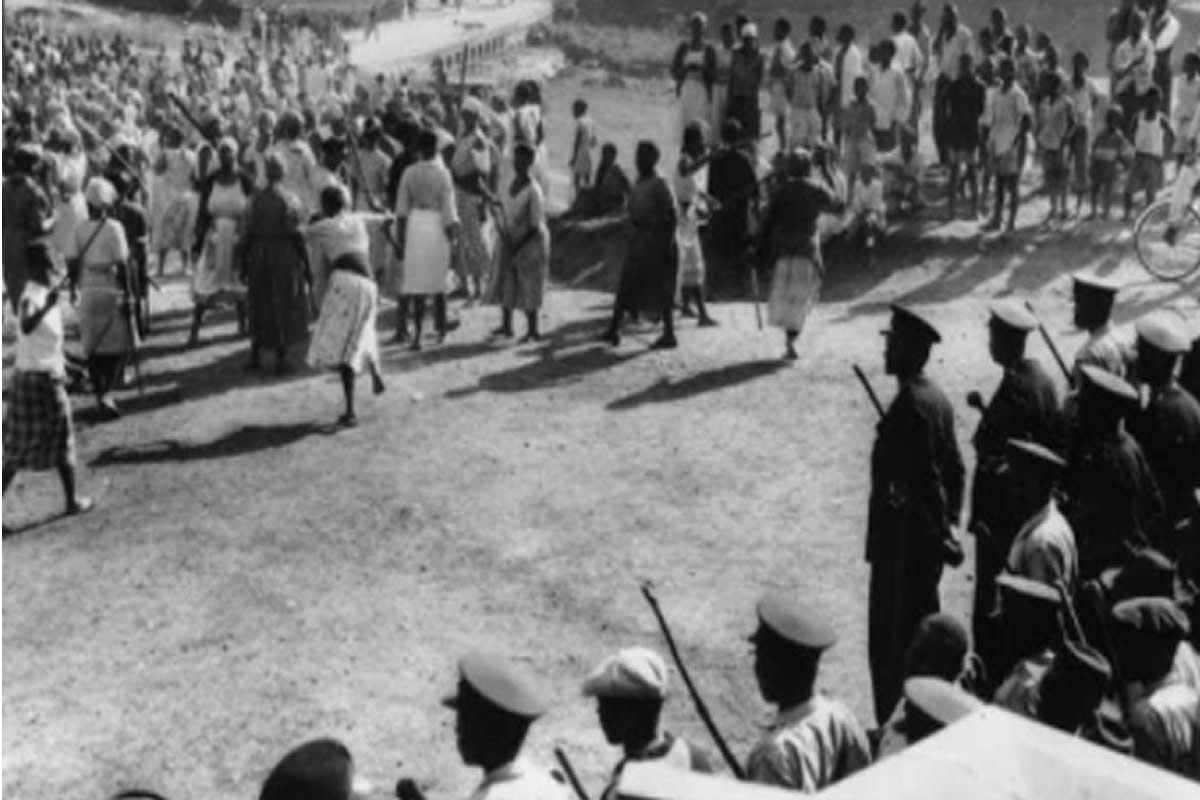Agitations, protests and confrontations of any kind have always been part and parcel of the Nigerian system. Way before the country got her independence in 1960, during the colonial era and till now; these actions have either led to a definite change in the system or further sparked a bigger chain of reactions.
Back in the Old Oyo Empire, the Alaafin of Oyo was then a very powerful monarch, but the system of government rested on the Ogboni to avoid excesses by the Alaafin. The Ogboni played this role very well to the extent that when an Alaafin flouts the separation of powers in place; he is sent a calabash, which by implication is an order to commit suicide. This was the very case of Alaafin Aole (Son of Sango) when he was sent a calabash in 1817 by his famous war general Afonja, who felt he was a weakling and unfit to rule.
Protests in Nigeria, however, took a new dimension circa 1900 when the masses, who were disgruntled over a government policy, took to the streets to make their grievances known. A new problem required a more proactive approach.
Women in the Eastern region of colonial Nigeria stood their grounds and kicked against the intolerable tax levy imposed by the colonial government. This was between 1925-1930. Prior to this time, protest of this kind was unheard of. As a result, many women were assaulted, beaten and arrested. More worrisome was that scores of women were killed at the Opobo riverbank, a stone’s throw from Ikot-Abasi, in today’s Akwa Ibom State.
As soon as the protest started, news soon got to Aba on the 6th of December 1929. It was while in Aba the protest got its name from (Aba Women’s Riot). Simultaneously, the entire Eastern region was engulfed by protests ably led by women.
In Midsummer of October 1946, the Abeokuta Ladies Club under the leadership of Madame Olufunmilayo Ransome-Kuti submitted a list of demands to the Alake of Egbaland, Oba Sir Ladapo Ademola II and one of their demands was the abolition of tax on women in Abeokuta amongst other issues around their welfare. Their demands were ignored; Madame Olufunmilayo was arrested and fined 3000 Pounds or risk going to prison.
On November 29th 1947, she led a protest of 10,000 women to the palace of the Alake of Egbaland. They camped around the palace for more than two days, sleeping, cooking and conducting all their affairs around the palace grounds. The Pressure was so huge on the colonial government that they had to abolish the tax laws and the Alake of Egbaland abdicated the throne on 3rd of January 1949.
The success of the Egba women’s revolt was motivated by the teachings of one woman named Alimotu Pelewura. Alimotu herself had her share on the fight for a better life for women in Lagos. It was a fight against taxation of women; mostly market women in Lagos. It is on records that the protest was massive. In all, over 7,000 women were in attendance at the Glover Hall on Broad Street. Their protest got support from the nationalist Herbert Macaulay who was a close ally of Alimotu. The exploits of Alimotu Pelewura gave a sense of direction, hope and belonging to women and had their demands met.
This is not forgetting the exploits of Pa Michael Imodu who led one of the biggest union strikes in the history of Nigeria. While the protest took it heavy tolls, the country was shut down for over four days.
More recently are protests that have demanded improved welfare, against oppressive regimes and basically for a fair right to life, right to be heard and right to basic amenities.
The SAP Riots of 1989, the infamous “Ali Must Go” crisis that rocked the country in 1978. The slogan “Ali Must Go” was adopted against the then Federal Commissioner of Education Col. Ahmadu Ali during the General Olusegun Obasanjo military regime. Let’s not forget that scores of students lost their lives during the protest that started when the Federal Government increased the meal ticket of students in tertiary institutions from 50 Kobo to 1.50 Kobo and then to N2.00.
The protests had Akintunde Ojo; a student of Architecture at the University of Lagos killed. Also in the fracas that ensued, eight students of the Ahmadu Bello University, Zaria, were sent to their early graves by the army. The protest was led by the late Segun Okeowo, the National President of Nigerian Union of Students. Segun Okeowo passed on January 28th, 2014 at 73.
The June 12 protests against the Military regime of General Sani Abacha had scores of people killed; students inclusive. The journey for a better Nigeria it seems would be forged through the series of agitations.
A lot of the people who were part of protests in the 70s, 80s, and 90s are probably in their 50s and 60s by now. A new chapter of our country’s history is being written before our very eyes. One thing is sure as things unfold that; posterity will hold us all accountable for the future we leave for the unborn children.
 Gistfox Your News Window To The World
Gistfox Your News Window To The World 




